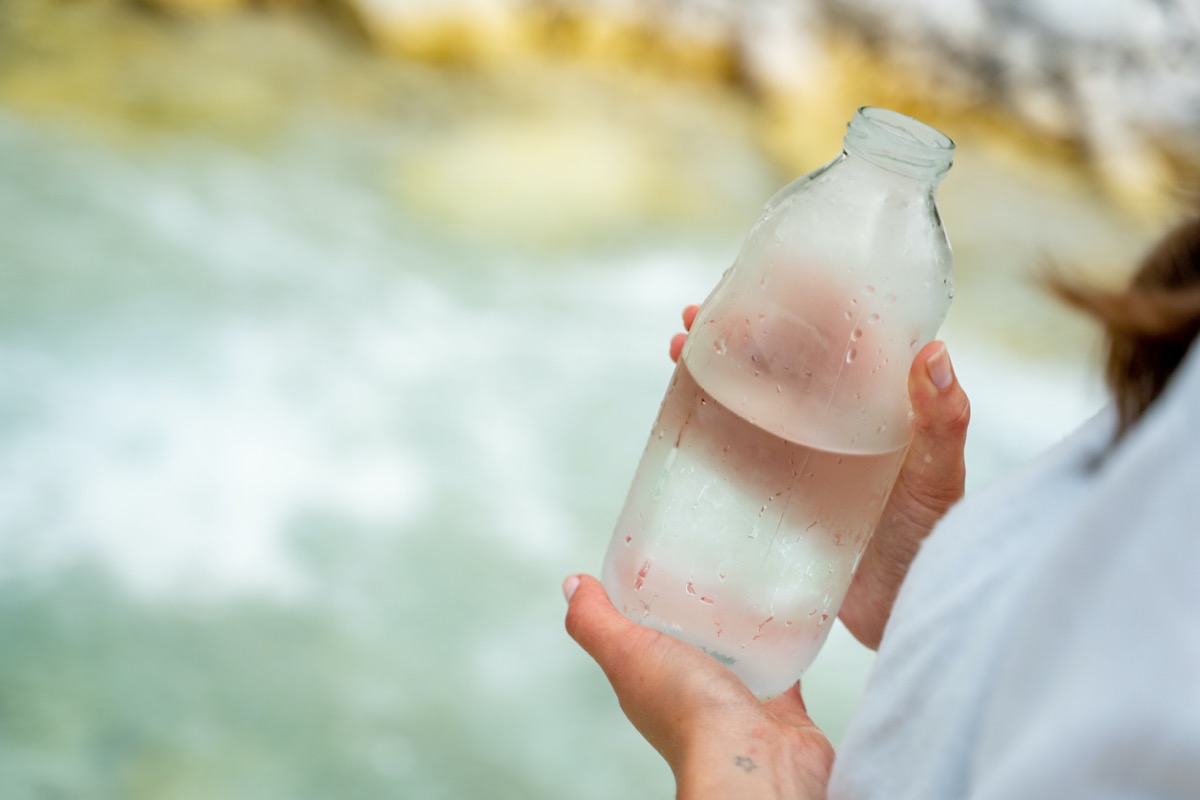We may earn revenue from the products available on this page and participate in affiliate programs. Learn More ›
Unlike tap or even filtered water, distilled water does not contain any minerals or salt. The lack of minerals in distilled water makes it an optimal choice to use for many types of machinery, health and medical devices, such as cool mist humidifiers and continuous positive airway pressure (CPAP) machines, canning foods, watering plants, and more.
While you can purchase distilled water at the grocery store, it is relatively easy to make your own distilled water at home for free. Continue reading to learn how to make distilled water along with the answers to other questions you may have, such as “is distilled water good for you?” and “what is distilled water used for?”
What is distilled water?
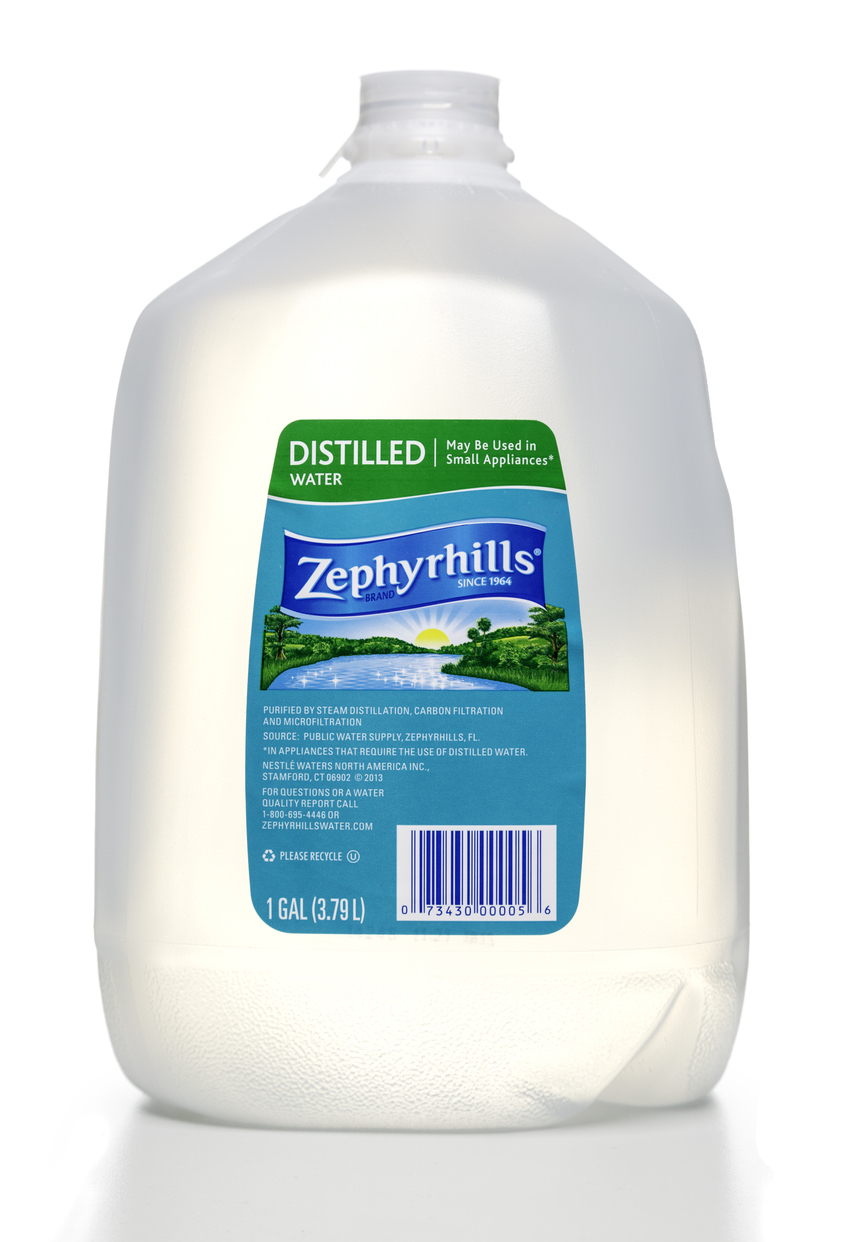
So, what is distilled water? The process of distillation involves boiling fresh water until it turns into water vapor. The water vapor is then condensed back into its liquid form in another container. During this process, all the minerals, salts, and other contaminants are removed from the water.
Many of the benefits of distilled water are due to this lack of minerals and other contaminants. For example, if you use tap water, or even filtered water, in a CPAP machine or ultrasonic or evaporative humidifier, it can cause scaling or promote the growth of bacteria.
Questions still remain about whether using distilled water for drinking is a good idea. Because the process of distillation removes the potentially beneficial minerals from the water, some believe that it isn’t ideal for drinking. On the other hand, some studies question whether our bodies are even able to absorb these minerals if they’re left in water. If you choose to drink distilled water, expect the taste to be different. Without the sodium, magnesium, calcium, and other minerals in the water, it will have a flat and bland taste.
How to Make Distilled Water
Below, you’ll find the necessary materials, tools, and steps to follow to make distilled water at home on your stovetop. While there are other methods for making distilled water, this is one of the easiest you can do in your own home.
Tools & Materials
Bobvila.com may earn a commission from purchases made through these links.
BEFORE YOU BEGIN
Before you embark on the process of making your own distilled water, refresh your memory about the water cycle. Liquid water, water vapor, and condensation will all play a role when making your own distilled water.
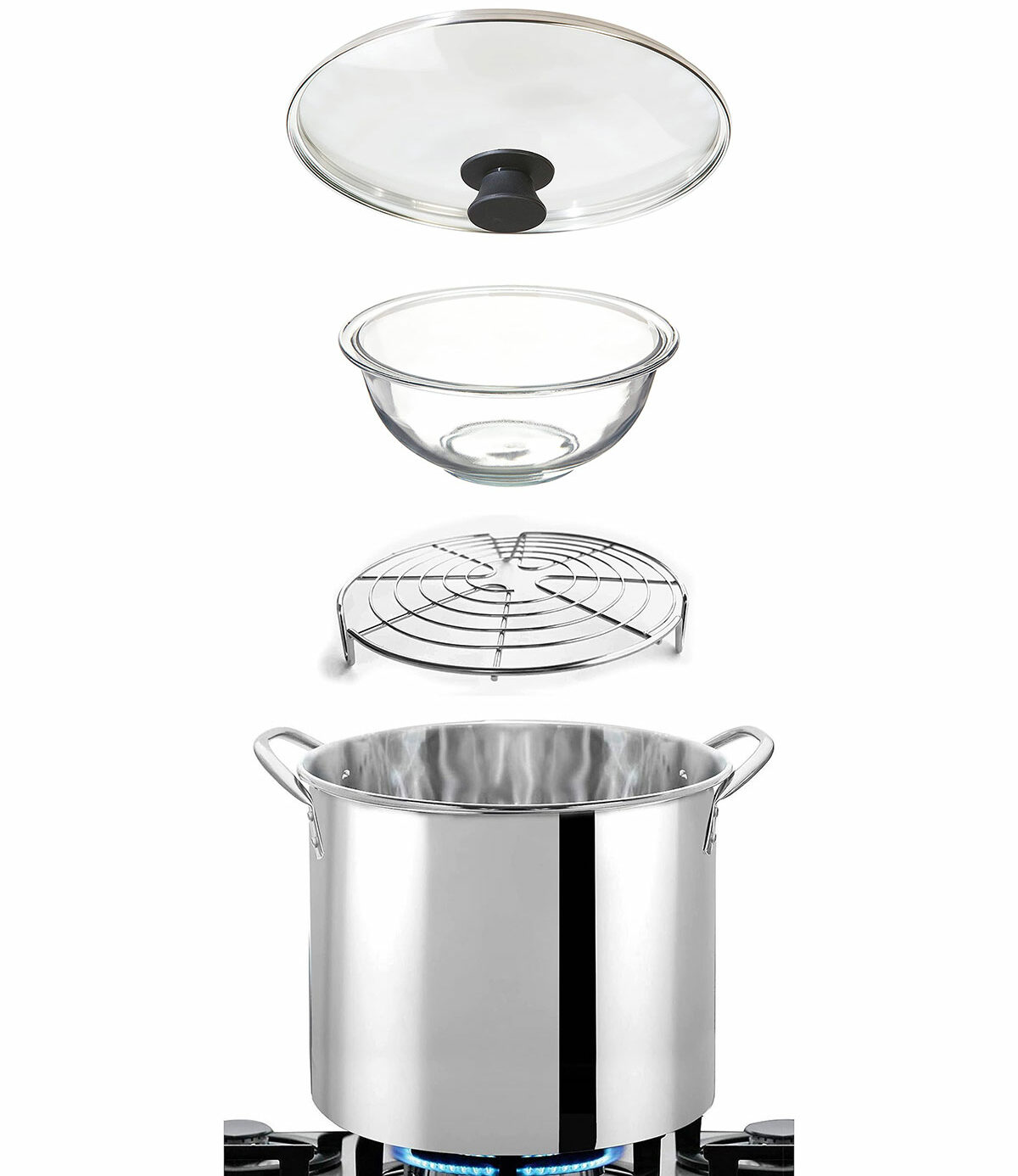
STEP 1: Put the baking rack in the pot and add water.
Place the baking rack into the bottom of your 5-gallon stainless-steel pot. Next, add about two and a half gallons of tap water to the pot (or fill it about halfway if you’re using a smaller pot).
STEP 2: Put the glass bowl on top of the water in the pot.
Place the glass bowl into the pot. It should float on the surface of the water. The baking rack will help prevent the bowl from coming into contact with the base of the pot. Make sure that there is sufficient space for air to circulate around the sides and the top of the bowl.
STEP 3: Place the inverted lid on top of the pot and fill it with ice.
Invert the lid (assuming the lid is concave if looking at it from the bottom) and place it on the pot. Fill up the lid with ice cubes. The ice cubes are helpful when making distilled water, as they will cause the water vapor to condense on the underside of the lid more quickly. Then, the distilled water droplets will fall into the glass bowl inside the pot.
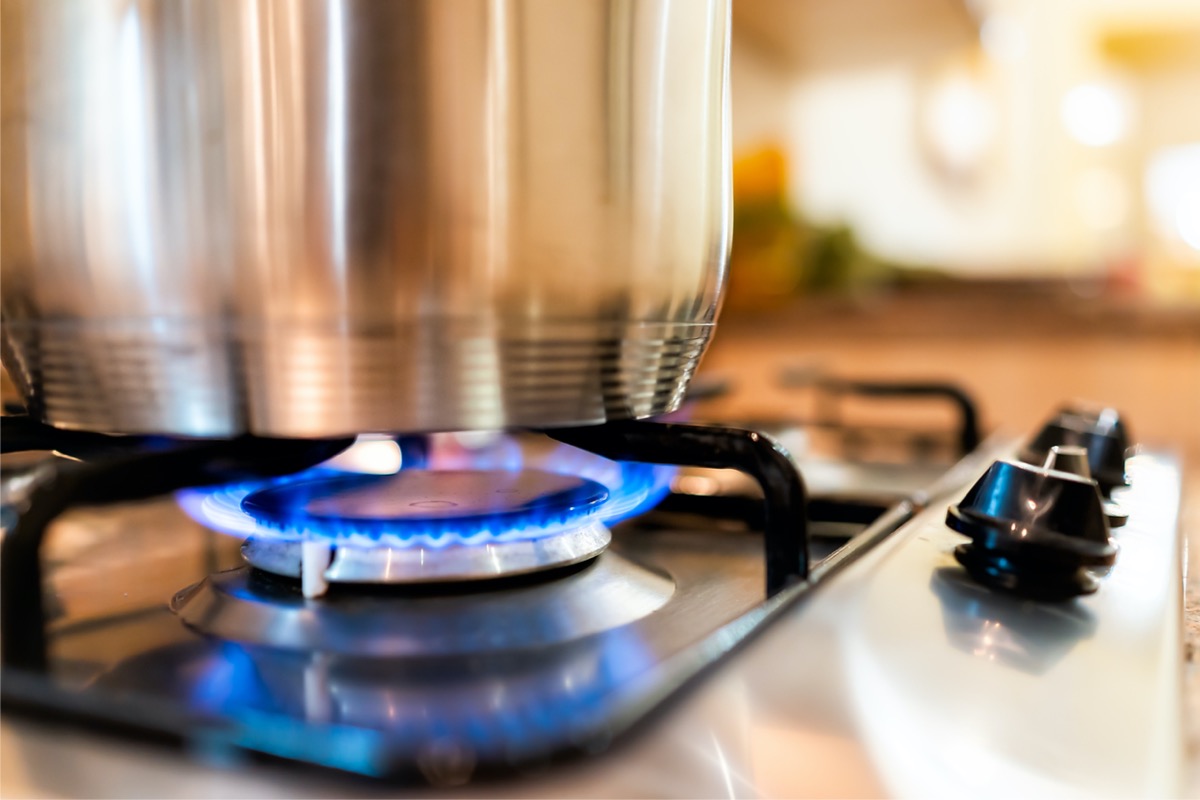
STEP 4: Boil the water and monitor the ice left in the lid.
Set the burner between medium and medium-high heat. Ideally, you want it hot enough that the water in the pot simmers, but does not boil. Check back on your pot periodically. If the ice in the lid has melted, dump it out in the sink and replace it with fresh ice (use oven mitts; the lid will be hot). It will likely take about 45 minutes or so to turn the tap water in the pot into distilled water.
STEP 5: Allow the distilled water to cool before storing it.
After all of the tap water in the pot has evaporated, condensed, and dropped into the bowl as distilled water, the process is complete. Before placing the distilled water into bottles or putting it to immediate use, allow it to cool completely.
The Best Uses for Distilled Water at Home
If you’re wondering “what do you use distilled water for,” there are actually myriad ways it can be used. Here are some of the more common distilled water uses:
- Filling humidifiers
- Filling the tank on a CPAP machine
- Sterilizing baby bottles
- Watering more sensitive houseplants
- Steaming or ironing laundry
- Cleaning wounds
- Car maintenance (topping off the cooling system or battery fluid)
- Canning fruits and vegetables
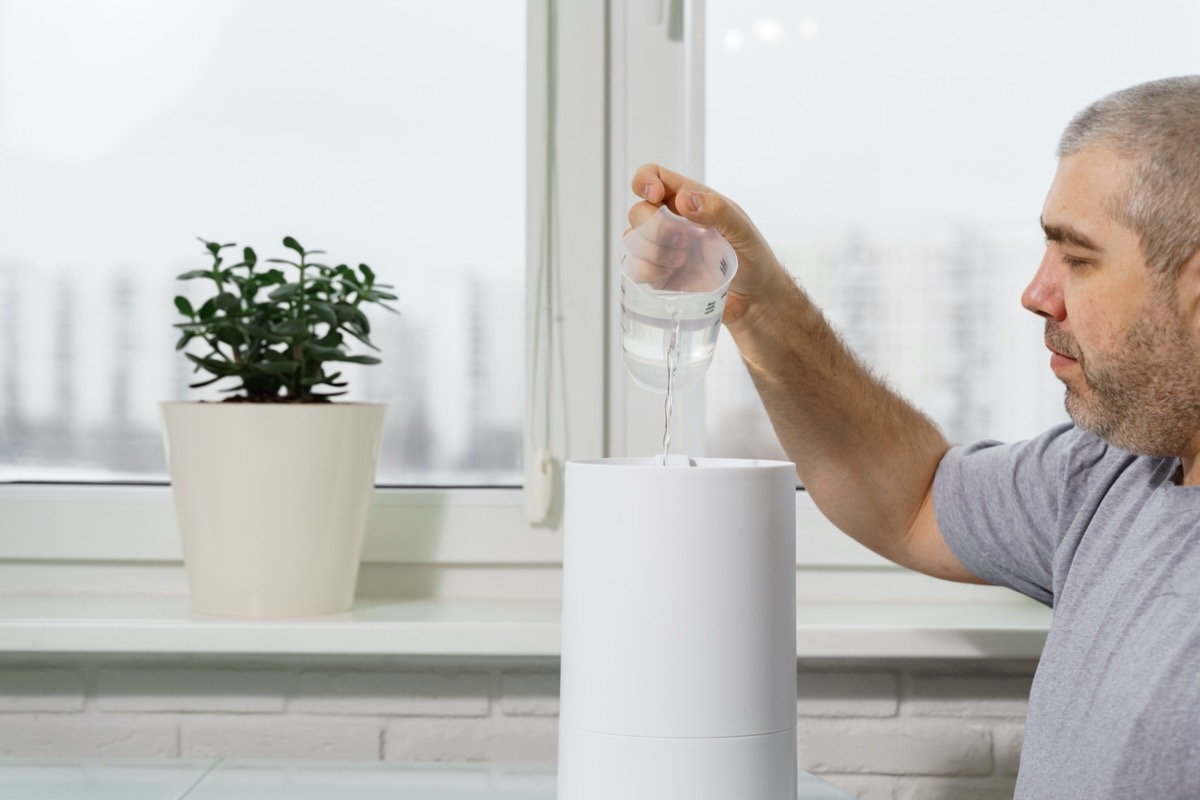
FAQ About Distilled Water
Do you have a few remaining questions about making or using distilled water? Read through the frequently asked questions below to learn more.
Q: How long do you simmer water to make it distilled?
It will typically take about 45 minutes to make distilled water.
Q: Is distilled water safe to drink?
Yes, distilled water is safe to drink. However, it may taste bland or flat compared to filtered or tap water.
Q: What’s the best way to store distilled water?
To store distilled water, place it in a glass container. Keep the container in a cool and dry place where it will not be exposed to direct sunlight.
Q: How long can you keep distilled water?
When stored properly, an unopened, store-bought container of distilled water should last for multiple years (five or more). Once opened, store-bought containers of distilled water can be used for appliances for about a year, but for drinking, should be consumed within a week. Homemade distilled water will last for up to one week.
Related: 12 Surprising Things You Should Never Clean with Water

